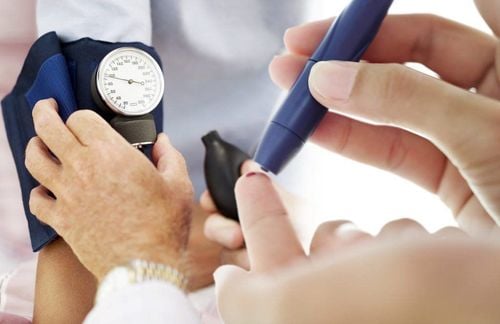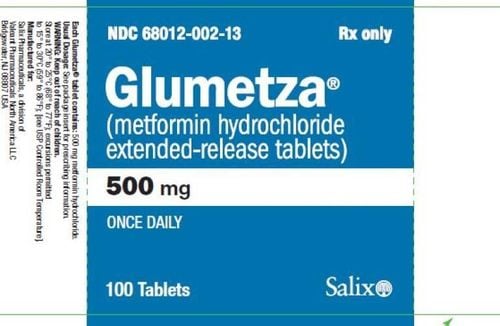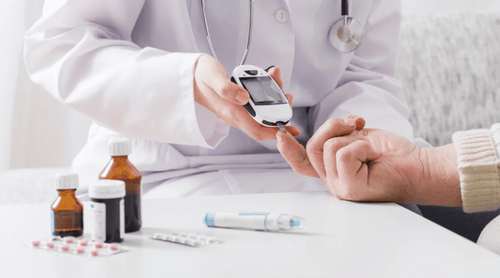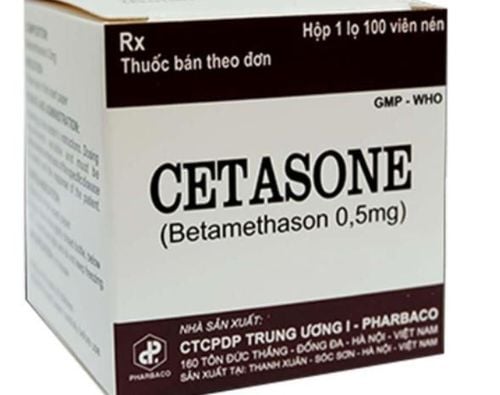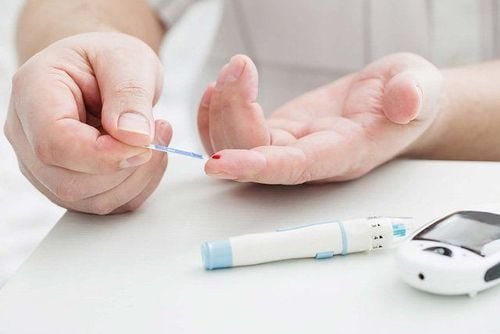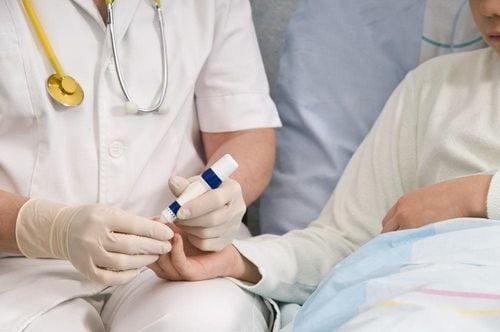This is an automatically translated article.
Increased osmotic pressure due to hyperglycemia is a serious complication in patients with type 2 diabetes. If not detected and treated promptly, elevated blood osmolarity can lead to many consequences. dangerous and even fatal for the patient.
1. Overview of increased blood osmotic pressure
Increased blood osmolality due to hyperglycemia is also known as hyperosmolar coma. This is a condition that occurs when a person's blood sugar levels stay too high for a long time, leading to severe dehydration and confusion.
Mortality from complications of hyperosmolarity can be as high as 20%.
2. Motivational factors
Patients with type 2 diabetes easily lead to increased blood osmotic pressure when encountering factors such as:
From 60 to 70 years of age or older; Acute infection or other serious medical conditions such as heart attack or stroke; Are taking medications that decrease glucose tolerance (glucocorticoids) or diuretics; Do not take diabetes medications prescribed by your doctor.
3. Symptoms of increased blood osmotic pressure
When blood sugar levels are high, excess sugar is excreted in the urine, causing the patient to urinate frequently. Therefore, diabetic patients will become severely dehydrated.
Symptoms of increased blood osmolality in patients with diabetes usually appear slowly and progress over days to weeks and include:
Hyperglycemia (above 600 mg/dL); Blood osmolality > 320 mOsm/L; Confusion, hallucinations, drowsiness or loss of consciousness; Dry mouth, excessive thirst; Frequent urination; High fever over 38 degrees Celsius; Blurred vision or loss of vision; Numbness or weakness of the body. When experiencing the above symptoms, the patient needs to see a doctor as soon as possible to be able to detect and treat promptly.

Các triệu chứng của tăng áp lực thẩm thấu máu ở bệnh nhân đái tháo đường thường xuất hiện từ từ
4. Diagnosis and treatment of increased blood osmotic pressure
If hypertension is suspected, the patient will have laboratory tests including blood glucose, blood osmolality measurement, electrolytes, blood ketones, ketones in urine and tests to screen for complications other evidence.
To treat increased blood osmotic pressure due to hyperglycemia, the doctor will conduct infusion of drugs depending on the patient's condition:
Infusion, anti-dehydration; Electrolyte compensation (potassium) to balance electrolytes in the body; Infusion of insulin to control blood sugar; Treat accompanying triggers, if present.
5. Complications of increased blood osmotic pressure
Increased blood osmotic pressure on diabetic patients is very dangerous, if not treated promptly can lead to:
Convulsions; Coma ; Cerebral edema ; Organ failure; Dead.
6. Prevention of increased blood osmotic pressure
The best way to prevent hyperosmolarity in diabetics is to follow a healthy lifestyle and keep blood sugar levels under control.
These measures include:
Check blood sugar regularly; Take diabetes medicine as prescribed by your doctor; Exercise appropriate for age and health, build a healthy diet; Do not drink alcohol on an empty stomach; Know the signs of hyperosmolarity and go to the hospital as soon as symptoms appear. In summary, increased osmotic pressure due to hyperglycemia is a serious complication that needs to be detected and treated promptly. Each person with diabetes needs to have regular health check-ups and proper treatment as directed by the doctor to avoid unwanted complications in general and increased blood osmotic pressure in particular. In addition, if you want to know what your blood sugar is and what your diabetes status is, you can sign up for a diabetes and dyslipidemia screening package at Vinmec International General Hospital. Not only health screening, the diabetes and dyslipidemia screening package also helps to detect pre-diabetes early, accurately classify diabetes type, develop a nutritional regimen, and monitor the treatment of diabetes. risks and complications caused by diabetes.
Using the screening package for diabetes and dyslipidemia at Vinmec, customers will receive:
Endocrine CK examination (with appointment) Total urinalysis (by automatic machine) Quantitative Glucose Quantitative HbA1c Quantitative Uric Acid Quantification of Cholesterol Determination of HDL-C (High density lipoprotein Cholesterol) Determination of LDL-C (Low density lipoprotein Cholesterol) Determination of Triglycerides Determination of Urea Determination of Creatinine Measurement of AST Activity (GOT) Measurement of ALT Activity (GPT) Measurement of GGT activity (Gama glutamyl Transferase) Quantification of MAU (Micro Albumin Arine) Echocardiography, transthoracic pericardium, Normal ECG, Carotid Doppler ultrasound, Transcranial Doppler (carotid) Arterial Doppler ultrasound, veins of the lower extremities (bilateral lower extremity arteries).
Please dial HOTLINE for more information or register for an appointment HERE. Download MyVinmec app to make appointments faster and to manage your bookings easily.
Source: my.clevelandclinic.org, msdmanuals.com



